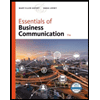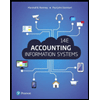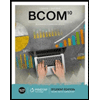
(a)
Case summary: Company AA (plaintiff) filed a lawsuit against company AD and its subsidiary AL (defendant) to recover unpaid rent. During the trial, it was found that AL had no employees and was formed to keep the assets of AD away from the creditors. AA pleaded to pierce the corporate veil of AD and AL.
To find:The grounds for piercing the corporate veil.
(b)
Case summary: Company AA (plaintiff) filed a lawsuit against company AD and its subsidiary AL (defendant) to recover unpaid rent. During the trial, it was found that AL had no employees and was formed to keep the assets of AD away from the creditors. AA pleaded to pierce the corporate veil of AD and AL.
To find: Result of the case, if parties were closed corporations.
Trending nowThis is a popular solution!

- >>>> e 自 A ? ↑ G סוי - C Mind Tap Cengage Learning CENGAGE MINDTAP Chapter 12 Homework: Managing Inventories in Supply Chains Assignment: Chapter 12 Homework: Managing Inventories in Supply Chains Questions Problem 12-70 Algo (Managing Fixed-Quantity Inventory Systems) 6. 7. ng.cengage.com + O C Excel Online Student Work Q Search this course ? Save Assignment Score: 91.34% Submit Assignment for Grading e Question 8 of 11 ▸ A-Z Hint(s) Check My Work 8. 9. 10. 11. Spreadsheet Environmental considerations, material losses, and waste disposal can be included in the EOQ model to improve inventory-management decisions. Assume that the annual demand for an industrial chemical is 1,600 lb, item cost is $2/lb, order cost is $45, inventory holding cost rate (percent of item cost) is 15 percent. Use the EOQ Model Excel template in MindTap to answer the following: a. Find the EOQ and total cost, assuming no waste disposal. Do not round intermediate calculations. Round your answer for the EOQ to…arrow_forwardTommys so books on leo July 21 year-end. The company does make eerless crue for Inverses ancage de ke year-end. On June 30, 2007, the Recall cours kolonce à 304,400 Now Reclude she folowing Dute Maker Face Value Tar Maturity Data R Apt C 85,000 90 day July 20 May 15 ya 7,000 July24 Car 10,000 December During Julhe following recom July Modes of $4,300 on Toorak edece 165700 un Vrede cord. The cred card recharge la 26. 20 Recall 24 (a) Journalize the July wonde July designery for ccrued in recevable coming 250 days for exams.com of goods sold edit account titles are automatically indented when amo Account Titles and Explanation Date Debit Credit Textbook and Media List of Accountaarrow_forwardJohnny brought $39.50 to the art supply store. He bought a brush, a sketchbook, and a paint set. The brush was 1 6 as much as the sketchbook, and the sketchbook cost 3 4 the cost of the paint set. Johnny had $2.00 left over after buying these items.arrow_forward
- Foreign currency remeasurement—Total assets A U.S.-based parent company acquired a European Union–based subsidiary many years ago. The subsidiary is in the service sector, and earns revenues and incurs expenses evenly throughout the year. The following preclosing trial balance includes the subsidiary’s original Euros-based accounting information for the year ended December 31, 2022, immediately prior to closing the company’s nominal accounts into the corresponding balance sheet accounts. It also includes the information converted into $US based on the indicated exchange rates: $US Conversion Weighted- Debits (Credits) Euros Current Average Historical Monetary Assets € 180,000.00 $216,000 $221,400 $234,000 Nonmonetary assets 720,000 864,000 885,600 936,000 Monetary Liabilities (90,000) (108,000) (110,700) (117,000) Nonmonetary liabilities (450,000) (540,000) (553,500) (585,000) Contributed capital (216,000) (259,200) (265,680) (302,400) Retained earnings…arrow_forward>>>> G סוי - C Mind Tap Cengage Learning CENGAGE MINDTAP Chapter 12 Homework: Managing Inventories in Supply Chains Questions Problem 12-44 Algo (Managing Fixed-Quantity Inventory Systems) 1. e 2. 3. 自 4. 5. ? ↑ 6. 7. 8. 9. 10. 11. ng.cengage.com + O C Excel Online Student Work Q Search this course ? Question 3 of 11 ► Hint(s) Check My Work Brenda opened a pool and spa store in a lively shopping mall and finds business to be booming but she often stocks out of key items customers want. The 28-ounce bottle of Super Algaecide (SA) is a high margin SKU, but it stocks out frequently. Ten SA bottles come in each box, and she orders boxes from a vendor 160 miles away. Brenda is busy running the store and seldom has time to review store inventory status and order the right quantity at the right time. She collected the following data: Demand = 9 boxes per week Order cost = $90/order Store open = 48 weeks/year Lead-time = 3 weeks Item cost = $180/box Inventory-holding cost = 10 percent per…arrow_forwardHow is corporation formed?arrow_forward
- Foreign currency remeasurement—Stockholders’ equity A U.S.-based parent company acquired a European Union–based subsidiary many years ago. The subsidiary is in the service sector, and earns revenues and incurs expenses evenly throughout the year. The following preclosing trial balance includes the subsidiary’s original Euros-based accounting information for the year ended December 31, 2022, immediately prior to closing the company’s nominal accounts into the corresponding balance sheet accounts. It also includes the information converted into $US based on the indicated exchange rates: $US Conversion Weighted- Debits (Credits) Euros Current Average Historical Monetary Assets € 160,000.00 $192,000 $196,800 $208,000 Nonmonetary assets 640,000 768,000 787,200 832,000 Monetary Liabilities (80,000) (96,000) (98,400) (104,000) Nonmonetary liabilities (400,000) (480,000) (492,000) (520,000) Contributed capital (192,000) (230,400) (236,160) (268,800) Retained…arrow_forwardווח CENGAGE MINDTAP G Chapter 09 Excel Activity: Exponential Smoothing Question 1 3.33/10 A e Submit 自 ? G→ Video Excel Online Tutorial Excel Online Activity: Exponential Smoothing ng.cengage.com Q Search this course ? A retail store records customer demand during each sales period. The data has been collected in the Microsoft Excel Online file below. Use the Microsoft Excel Online file below to develop the single exponential smoothing forecast and answer the following questions. X Open spreadsheet Questions 1. What is the forecast for the 13th period based on the single exponential smoothing? Round your answer to two decimal places. 91.01 2. What is the MSE for the single exponential smoothing forecast? Round your answer to two decimal places. 23.50 3. Choose the correct graph for the single exponential smoothing forecast. The correct graph is graph A ☑ Back Observation Exponential Smoothing Forecast 100 Forecast 95 95 90 90 A-Z Office Next A+arrow_forwardWhat monthly compounded interest rate would Second National Bank need to pay on savings deposits to provide an effective rate of 6.2%?arrow_forward
 BUSN 11 Introduction to Business Student EditionBusinessISBN:9781337407137Author:KellyPublisher:Cengage Learning
BUSN 11 Introduction to Business Student EditionBusinessISBN:9781337407137Author:KellyPublisher:Cengage Learning Essentials of Business Communication (MindTap Cou...BusinessISBN:9781337386494Author:Mary Ellen Guffey, Dana LoewyPublisher:Cengage Learning
Essentials of Business Communication (MindTap Cou...BusinessISBN:9781337386494Author:Mary Ellen Guffey, Dana LoewyPublisher:Cengage Learning Accounting Information Systems (14th Edition)BusinessISBN:9780134474021Author:Marshall B. Romney, Paul J. SteinbartPublisher:PEARSON
Accounting Information Systems (14th Edition)BusinessISBN:9780134474021Author:Marshall B. Romney, Paul J. SteinbartPublisher:PEARSON
 International Business: Competing in the Global M...BusinessISBN:9781259929441Author:Charles W. L. Hill Dr, G. Tomas M. HultPublisher:McGraw-Hill Education
International Business: Competing in the Global M...BusinessISBN:9781259929441Author:Charles W. L. Hill Dr, G. Tomas M. HultPublisher:McGraw-Hill Education





